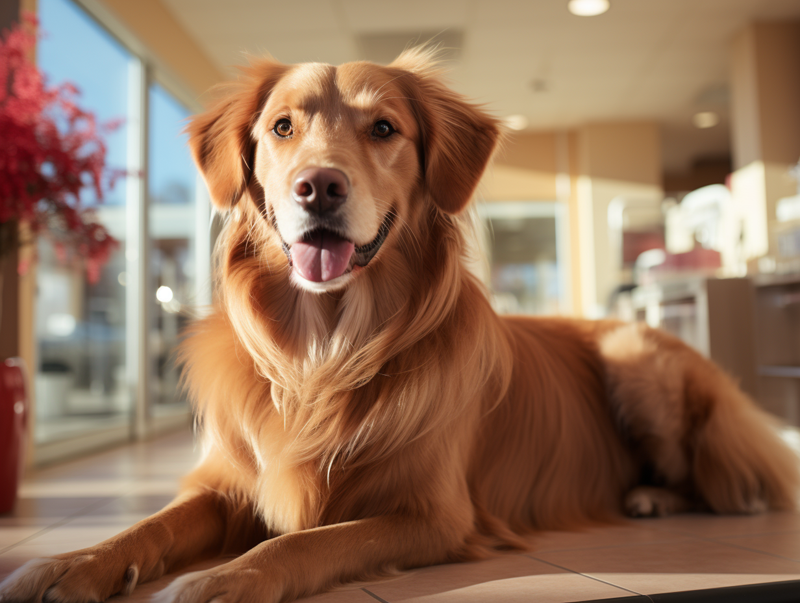Is Pet Insurance Worth It?

Sometimes, the quirks and qualities that so endear us to our pets are the same characteristics that may get them into precarious predicaments. Your curious cat hops up on the table and starts finishing off your morning cup of coffee. Your playful pup noses its way into a nest of barbwire. Car accidents or attacks from unsupervised animals are more critical concerns, even though we may hate to imagine them as realities.
You don’t have to be a neglectful pet parent for something adverse to happen. In certain scenarios where your dog or cat experiences an illness or injury, pet insurance could be a literal life-saver; still, most pet owners in the United States opt to forego pet insurance. Ahead, we’ll explore factors about you and your pet that may help you decide if pet insurance is worth the investment. Armed with up-to-date information, you may feel empowered to make the best decision for your beloved critter.

What Does It Cost To Treat Common Pet Illnesses And Injuries?
According to recent data, the most common pet insurance claims filed for dogs stem from minor issues like urinary tract infections, ear infections, and skin conditions, while other common claims reflect more critical concerns such as arthritis, seizures, and lameness. Cat parents file claims for similar minor nuisances, though more serious healthcare issues like kidney disease, diabetes, and cancer are frequently reported.
While standard conditions are typically easy to address with antibiotics, an unexpected surgery can exceed $1,000. The following costs for specific treatments below are for dogs and cats, respectively:
- Cancer ($4,100/$3,800)
- Ingested objects ($3,500/$3,400)
- Broken bones ($2,700/$2,300)
While many pet owners may not worry about cancer (based on their pet’s age) or broken bones (based on the lack of hazards in the residence), any pet could ingest an object that piques its attention. Today’s pet parents spend an average of $472/year on surgical vet visits and $250/year on routine vet visits, while cat owners spend $232 and $198, respectively. It may be worth considering that pet treatment costs have risen steadily through the years and will likely continue to do so.
How Much Does Pet Insurance Cost?
What you pay for pet insurance will depend on several factors, including the pet’s age, breed, cost of veterinary care in your area, and the insurance policy you choose. Rates increase as your pet ages and become more susceptible to health issues.
For an accident and illness policy, the average yearly cost is approximately $528 for dogs and $360 for cats ($44/month and $30/month). These figures will vary based on annual coverage, deductibles, and reimbursement percentages.
You also have the option to select accident-only pet insurance policies, which may be optimal for younger dogs and cats. In these cases, your pets will be covered if they swallow a toxic substance or get hit by a vehicle, but not for illnesses. Typical pet insurance plans tend to cover the following:
- Emergency care, surgery, and hospitalization
- Diagnostic testing
- Prescription medications
- Broken bones
- Chronic conditions
- Breed-specific conditions
Pet owners will pay upfront and submit a claim for reimbursement from their pet insurance company. Most policies are stipulated by an annual deductible, which is what you pay out of pocket before your insurance starts to chip in. Once you meet your deductible, the insurance company generally reimburses a certain percentage (i.e., 70%, 80%, or 90%).
So, if your cat requires a $2,500 surgery, you have selected a 70% reimbursement option, and you have not contributed any amount toward your deductible of $1,000, your plan would pay $1,450. The lower your deductible and higher your reimbursement rate, the higher your premium will generally cost.
What Is Not Covered By Pet Insurance?
Knowing the exclusions to your pet insurance policy will be instrumental in your decision to buy a policy. Most importantly, pre-existing conditions are not covered. Pet insurance policies are only for new illnesses or injuries, and in the case that you invest in pet insurance but then allow the policy to lapse, your pet will not be covered for a condition that developed during that window.
Below are other common pet treatments not covered by pet insurance:
- Spay and neuter surgeries
- Vaccinations and annual checkups
- Preventative flea and heart-worm medication
- Teeth cleanings
- Grooming
- Waste disposal
- Nutritional supplements
- Experimental treatments
What Are The Alternatives To Pet Insurance?
Most domestic dogs and cats are not covered by pet insurance; while nearly 66% of American households are home to pets, not even 5 million cats and dogs were covered by pet insurance in 2022. Of that figure, 82% of insured pets are dogs, and 18% are cats. These statistics could indicate that American families are choosing different ways to fund their pet care.
You might opt to set up a savings account dedicated to your pet. You can also use your credit card to pay for more expensive surgeries if you have a higher credit limit. However, it’s important to consider your interest rate and ability to pay off a procedure over time.
Some veterinarians may offer financing or payment plans. Alternatively, charitable organizations in your area may offer financial assistance. It is also not uncommon for people to promote crowdfunding campaigns on their social media accounts when the unthinkable occurs.
Is Pet Insurance Worth It?
Just like pets, pet owners are all different. What feels feasible for you might not work for someone else. Some may appreciate the peace of mind that pet insurance brings, while others are content to take on the risk of unexpected expenditures compared to investing in a policy they may, in reality, never use.
To help you make the best decision for your pet, consider the following questions:
- What would I be willing to pay out of pocket if something unanticipated occurred?
- Does my pet’s breed make them more inclined to develop hereditary conditions associated with high healthcare costs? (i.e., Great Danes, Labrador retrievers, and German shepherds are more inclined to develop hip dysplasia)
- How old is my pet? (pet insurance policies cost more for older dogs and cats)
- Does my pet’s residence put them at a greater risk for accidents or illnesses? (i.e., living in a neighborhood with roaming animals, living in a home without a fenced-in yard, living next to water or high-traffic roads)
The reality is that one in three pets will require emergency veterinary surgery every year, and most Americans do not have the savings to cover a procedure costing $1,000 or more. To gain additional clarity regarding your decision to invest in pet insurance, consider speaking with your veterinarian. They can impart valuable insight into what illnesses might affect your pet in the future and give peace of mind by providing access to helpful information and resources.
For more information about this subject or general questions you can contact:
Courie Dennis with Posh Paws Pet Care, LLC
843.900.0438
Visit our website at PoshPawsPetCareSC.com
Or send us a note from our contact page here.
